
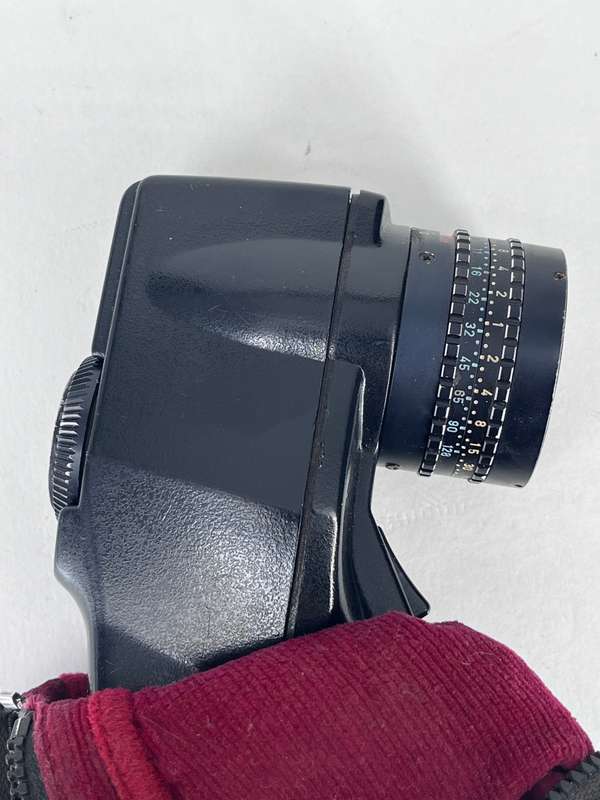
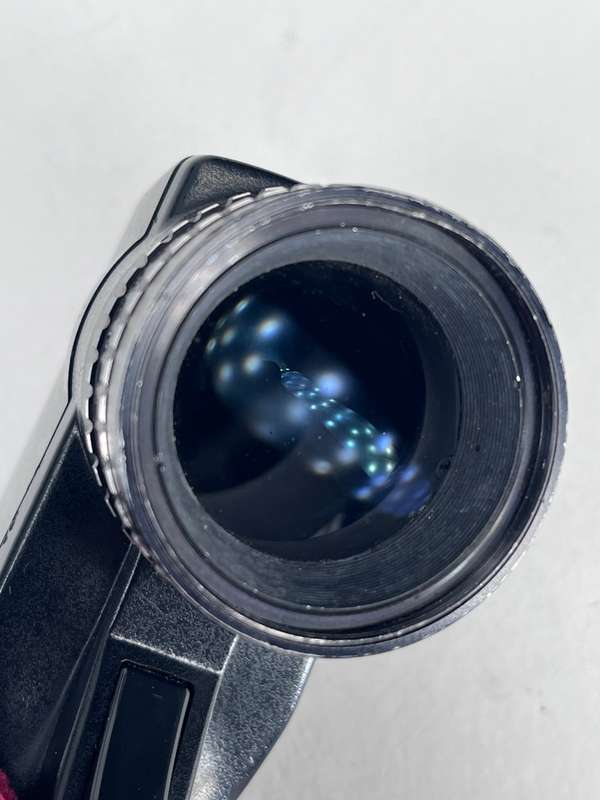
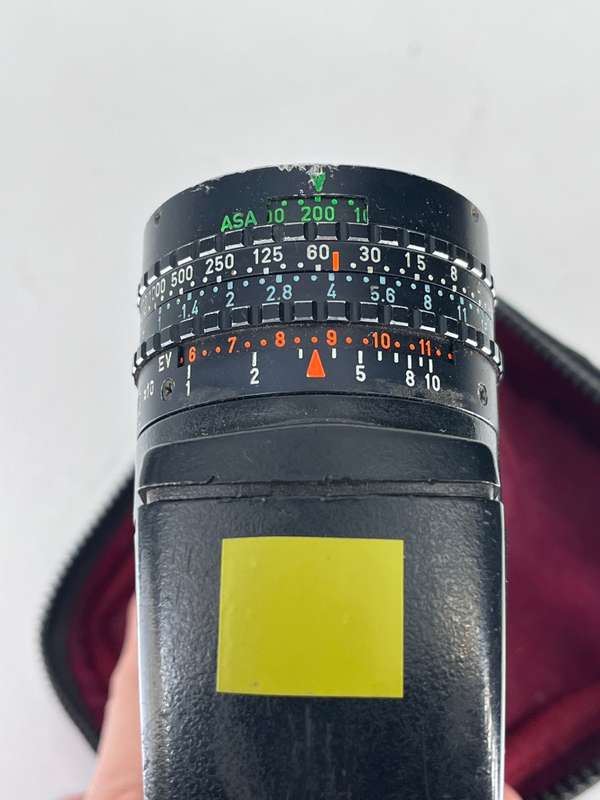

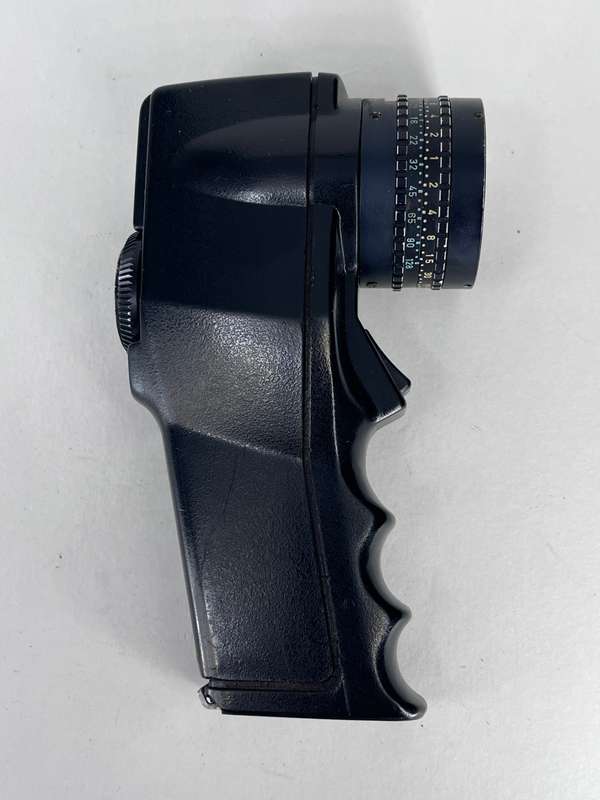
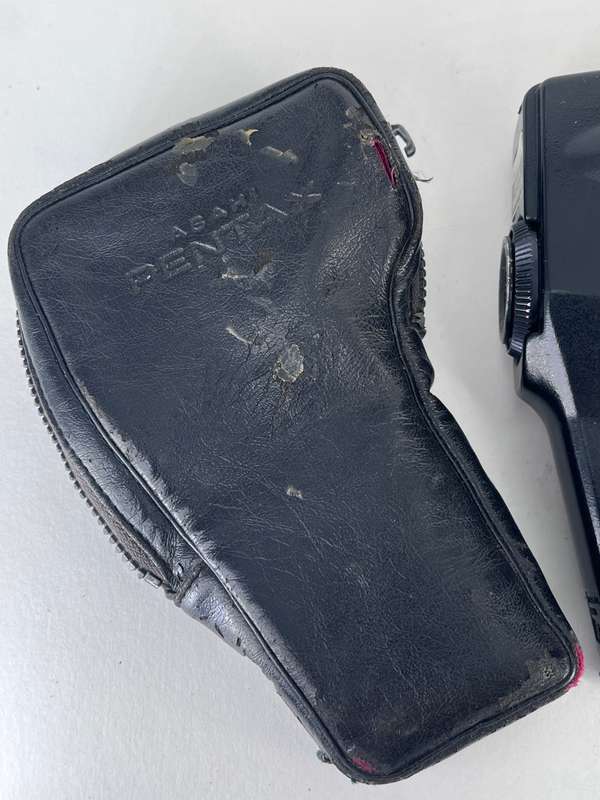
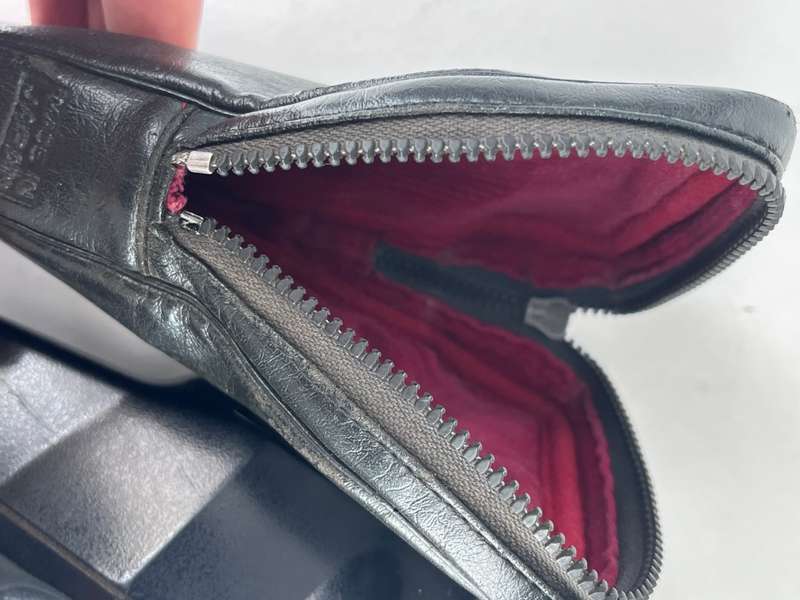
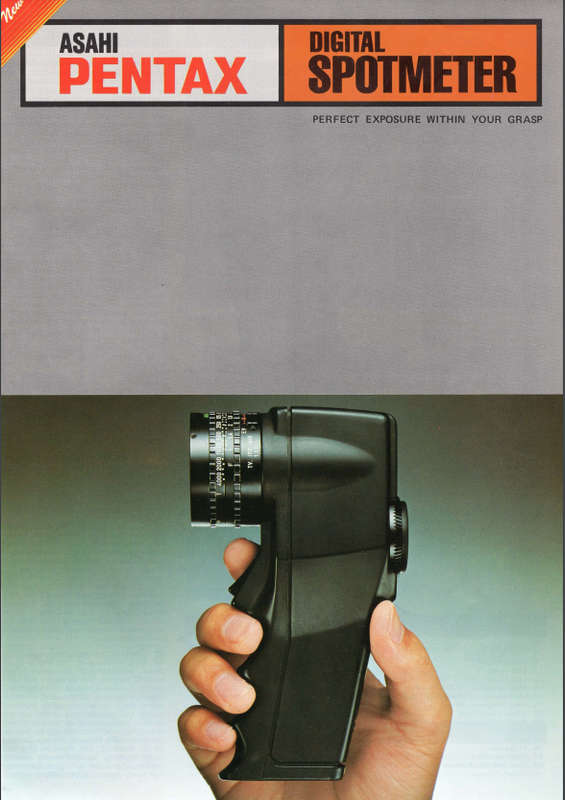
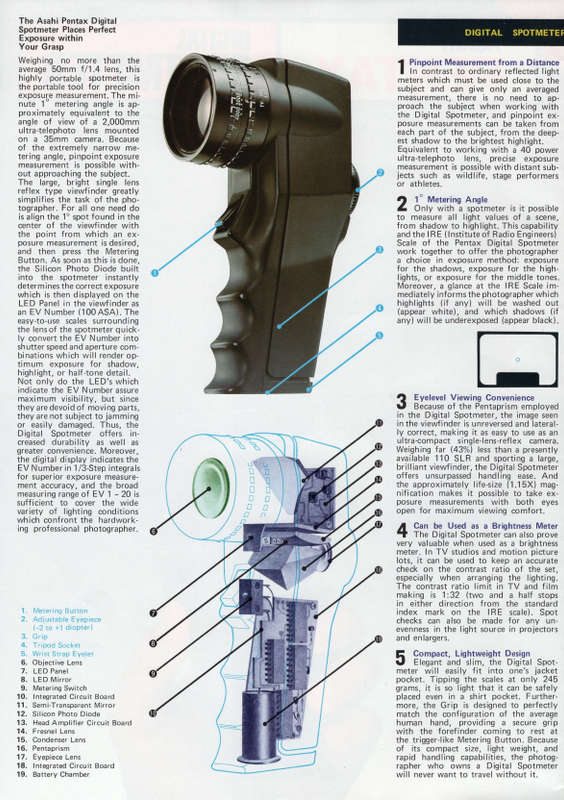
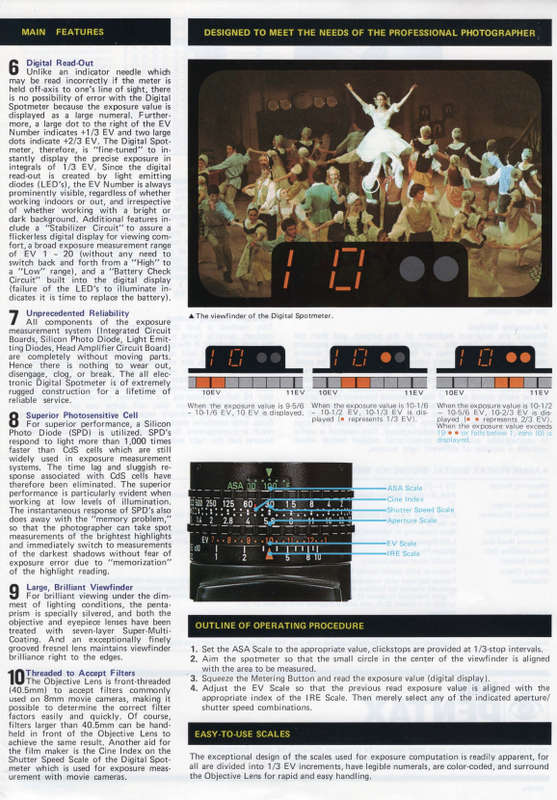
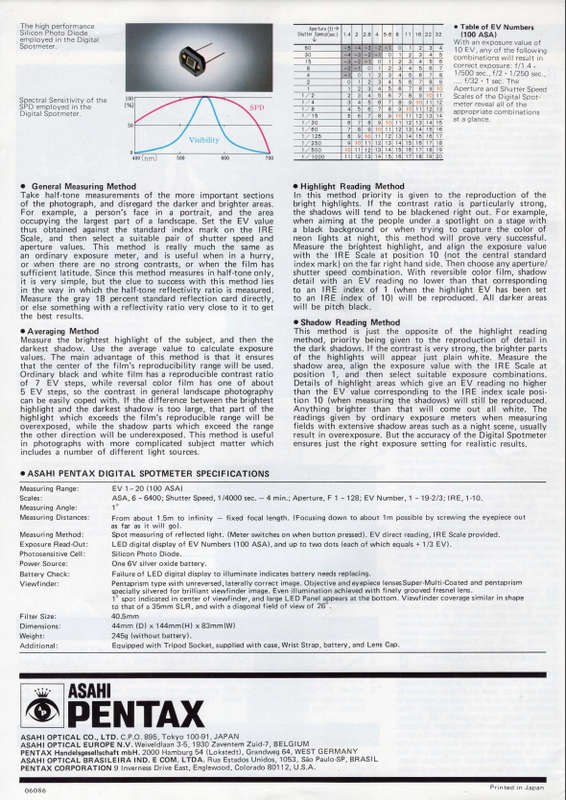





Pentax spot meter
Check my rate
| Main centres: | 1-3 business days |
| Regional areas: | 3-4 business days |
| Remote areas: | 3-5 business days |

















| Main centres: | 1-3 business days |
| Regional areas: | 3-4 business days |
| Remote areas: | 3-5 business days |
I used this meter for many years. Its battle weary, but will never let you down.
If you want cleaner look at my other offering! But this is good value for my mind.
The Pentax Digital Spotmeter is the earliest and the simplest of the meters I tested. Introduced in 1977, this meter was popularized by Ansel Adams. He used one of these during the last years of his life, and wrote about them in his popular books on photographic technique. Because of Adams, the Pentax Digital has remained extremely popular; especially with photographers who use the Zone System, the exposure metering system that he invented for black and white photography. This has kept the used prices of these meters, which are no longer manufactured, very high.
Despite the name, the meter is not a fully digital meter like more modern meters. The viewfinder gives a digital reading of an exposure value number, with 13 stop accuracy, that you transfer to a mechanical dial on the lens. When set to the correct film speed and the EV number the meter gives you, you can read out all of the aperture/shutter speed combinations that will give correct exposure.
Many users like the simplicity of the design. It has only one button; the one that activates the meter. More modern meters are more complex, with buttons to set film speed, exposure memory, averaging functions, mode selections, etc. Alongside the Digital Spotmeter, Pentax also made the Spotmeter V. Aside from being a lot larger and heavier than the digital meter, the main difference between them is that the Spotmeter V uses a moving needle to point to the EV numbers in the viewfinder instead of a digital readout. I used to have a Spotmeter V and it was a fine meter aside from the size and weight. Do not buy the earlier Pentax Spotmeters (the 1/21 Spotmeter, the Spotmeter II, and Spotmeter III); they require mercury batteries that are no longer made.